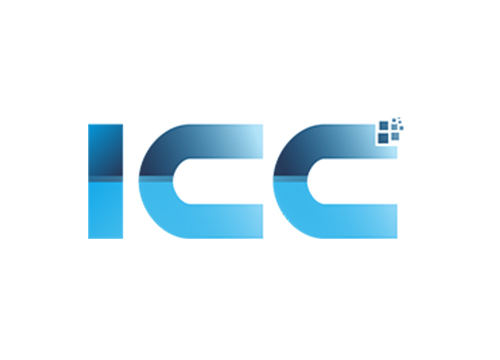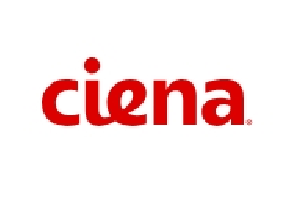HPE deal with Juniper casts doubt on DoJ competence
Evidence has swiftly mounted that a costly campaign by the US Department of Justice (DoJ) to block HPE's $14 billion takeover of Juniper was a gross miscalculation. It was predicated on the idea that a tie-up between the two companies would badly harm competition in the US market for enterprise wireless local area networking (WLAN), which essentially means Wi-Fi for businesses. The DoJ allowed the deal to happen several days ago after HPE agreed to divest parts of its Wi-Fi business and license the Juniper technology it would acquire. But the details of those concessions suggest the DoJ had been forced to accept its analysis was seriously flawed.
In short, the remedies covered the sale of an HPE division called Instant On and the licensing of Juniper's Mist technology, the brand name for its portfolio of enterprise WLAN products. Few details were provided in the statements issued by the DoJ and HPE. But to address the DoJ's big concern about the merger, the divestment and licensing would need to reduce the combined company's market share in enterprise WLAN.
Would they? A direct question on this matter to HPE went unanswered. But a call the top executives from HPE and Juniper fielded last week with analysts and reporters provided some clarity. Observers may have been especially curious about Instant On, a service apparently too insignificant to warrant a single mention in HPE's filings with the US Securities and Exchange Commission. Small seems to be the operative word.
"The Aruba Instant On is a very new business that we built over the last three years or so," said Antonio Neri, HPE's CEO. "It's completely separate from the rest of the traditional HPE Aruba platform or Aruba Central, and it's a unique offer targeting the SMB [small and medium-sized business] segment of the market, and more specifically the S of SMB. It's a very small business for us."
The Cisco factor
In other words, a sale of Instant On would have no material effect on HPE's Wi-Fi market share, estimated globally to be about 15% in the final quarter of 2024, according to market research company IDC. While HPE's market share is conceivably bigger in the US market alone, Juniper is much smaller on the international stage, with just 5% of the enterprise WLAN market, according to IDC's data. The DoJ's mistake was to penalize HPE and Juniper for the dominance of Cisco, with 40% of the global market, and argue that a merger would create a duopoly.
"The proposed transaction between HPE and Juniper, if allowed to proceed, would further consolidate an already highly concentrated market – and leave US enterprises facing two companies commanding over 70% of the market: the post-merger HPE and market leader Cisco Systems Inc.," said the DoJ in the January statement describing its opposition to a takeover.
Prominent analysts were nonplussed. "In my opinion, this has always been a weak argument as Cisco's share is so large that it plus almost anyone else would have dominant share," said Zeus Kerravala of ZK Research in an article written on June 29 for SiliconANGLE. The equivalent would be to block a merger between two smallish US providers of 5G equipment on the grounds that it would leave the combined company plus Ericsson, the dominant force in that market, with a duopoly. Pushing for a breakup of Cisco would have been much harder and riskier for the DoJ. Instead, it went after HPE.
But what about the forced licensing of Mist? For a start, this targets the company with a much smaller share of the global enterprise WLAN market. It also turns out to cover a relatively small part of what Mist does. "What we have agreed with the DoJ is to offer a license through an auction to a specific aspect of the Juniper Mist, which is just the AI operations part," said Neri. "So that's what it entails, not the entire Juniper Mist."
Neri, essentially, is not afraid HPE will lose a big competitive advantage by licensing the AI operations part of Mist. HPE, importantly, remains in control of the business. Nor does the remedy agreed with the DoJ seemingly do anything to materially affect Juniper's Wi-Fi market share. Kerravala, again, sounded befuddled in his article for SiliconANGLE, saying the move would merely "put best-in-class AI Ops networking software in the hands of another company."
All the concessions really achieve is to let the DoJ walk away with a modicum of dignity and insist it did a good thing for Americans. Indeed, this was exactly how it framed the agreement reached with HPE. "This marks another key legal victory from the Department of Justice's Antitrust division," said Chad Mizelle, the DoJ's chief of staff, in prepared comments. "Our attorneys will continue fighting and winning to defend the American people and consumers."
Most American people, of course, will care little about the details of the agreement, and they will certainly be no better off thanks to the DoJ's intervention, which has inevitably gobbled up time and money. The real victors are HPE and Juniper, which finally get to celebrate a takeover announced back in January last year.
Hush-hush on the specifics
What happens next, however, was not made substantially clearer by the call featuring both Neri and Rami Rahim, the former Juniper CEO who became general manager of the new HPE Networking unit on completion of the deal. The Juniper brand, as valuable as it is for some products and customer segments, is to survive. The chief uncertainty concerns the integration of Aruba and Mist, the mainly Wi-Fi business units where there is the most overlap between the two companies. DoJ holdups have given Neri and Rahim a long time to think about what to keep and what to cut. But they remained evasive in their answers to the questions posed by analysts and reporters.
"All our customers, whether they're starting their journey on the Aruba side or the Juniper side, are going to have a path to that exciting true north," said Rahim. "It's too early at this point to provide you with the specifics and the timeline, but that is the strategy that we are embarking on, and nobody gets left behind."
A big reason for the takeover, though, is to boost profitability. Juniper reported a gross profit margin of almost 59% for its last fiscal year, while HPE's was just 33%. Inside HPE, the intelligent edge business that houses Aruba generated an operating margin of about 25%, compared with the 7% margin for the whole of HPE. It also accounted for about half of HPE's operating profit. Neri expects the contribution made by the new HPE Networking unit to be even higher.
The cost target announced 18 months ago was to reduce annual expenses across the two companies by $450 million annually within three years of the deal's completion. That seems a relatively modest target given the combined workforce of about 72,000 in late 2024. But no one who has ever merged overlapping assets said the process was easy.





